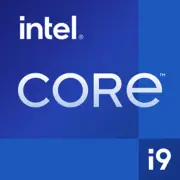Intel Core i9-7900X

Intel Core i9-7900X in 2025: Should We Consider a Legend from the Past?
Architecture, Performance, and Relevance in Today's Reality
Key Specifications: What Does the i9-7900X Offer?
The Intel Core i9-7900X processor, released in 2017, was one of the first 10-core CPUs for the consumer market. Despite its age, its technical specifications are still impressive:
- Architecture: Skylake-X (14 nm manufacturing process).
- Cores/Threads: 10/20.
- Frequencies: 3.3 GHz (base), up to 4.3 GHz in Turbo Boost.
- Cache: 14 MB L3.
- TDP: 140 W.
- Performance: Geekbench 6 — 1323 (single-core), 8536 (multi-core).
Key Features:
- Support for Quad-Channel DDR4.
- 44 PCIe 3.0 lanes (compared to 16-20 on modern mainstream processors).
- Unlocked multiplier for overclocking.
In 2025, the 14 nm manufacturing process looks archaic against 5-7 nm chips from AMD and Intel, but the i9-7900X remains relevant in niche tasks due to its high multi-threaded performance.
Compatible Motherboards: What to Build Your System On?
The processor uses the LGA 2066 socket and X299 chipset series. Popular motherboard models (prices for new units in 2025):
- ASUS ROG Rampage VI Extreme ($250-300) — a top-end model with support for extreme overclocking.
- MSI X299 Tomahawk Arctic ($200-220) — a balanced choice of price and functionality.
- Gigabyte X299 AORUS Ultra Gaming ($180-200) — a budget option with basic features.
Selection Tips:
- Ensure the motherboard's BIOS is updated to the latest version (for compatibility with new SSDs and peripherals).
- Motherboards with active VRM cooling are preferred due to the CPU's high TDP.
- In 2025, new X299 motherboards are hardly produced — look for leftovers in warehouses or from trusted resellers.
Memory: DDR4 Is Still in Play
The i9-7900X supports Quad-Channel DDR4 with speeds up to 2666 MHz (standard) or 4000+ MHz (with overclocking). Recommendations:
- Optimal capacity: 32-64 GB (4x8 GB or 4x16 GB).
- Best modules: Corsair Vengeance LPX 3200 MHz or G.Skill Trident Z RGB 3600 MHz (from $80 for 32 GB).
Important: DDR5 is not supported, limiting system upgrades. However, for most tasks, DDR4 in quad-channel mode remains sufficient.
Power Supply: Power Calculation
With a TDP of 140 W and overclocking potential, the minimum recommended power supply wattage is 650 W. For systems with a top-tier graphics card (e.g., NVIDIA RTX 4070 Ti), choose 750-850 W.
Examples of Models:
- Corsair RM750x (80 Plus Gold, $110) — quiet and reliable.
- Seasonic Focus GX-850 ($130) — high efficiency.
Tip: Don’t skimp on the power supply — system stability with such a processor critically depends on power quality.
Pros and Cons of the i9-7900X in 2025
Pros:
1. Multi-threaded Performance: 20 threads handle rendering and encoding well.
2. Overclocking Potential: Frequencies can be increased to 4.5-4.7 GHz with good cooling.
3. Availability: Prices for new processors are around $300 (compared to $500-600 for modern 12-core CPUs).
Cons:
1. Power Consumption: Under load, it consumes up to 250 W (when overclocked).
2. Obsolete Technologies: No PCIe 4.0/5.0, DDR5, or Thunderbolt 4.
3. Heat Production: Requires liquid cooling or a top-tier air cooler.
Use Cases: Where is the i9-7900X Still Strong?
- Workload Tasks:
- 3D rendering in Blender, video processing in DaVinci Resolve.
- Virtualization (VMware, Hyper-V) — 20 threads allow running multiple OS instances.
- Gaming:
- In Full HD with RTX 4070, it achieves 100+ FPS in Cyberpunk 2077 but struggles in 4K due to GPU limitations.
- Lags behind the new Ryzen 5 8600G in single-core tests (Geekbench 6 Single Core: 1323 vs. 1800+).
- Multimedia:
- Streaming + encoding without lags thanks to surplus threads.
Competitors: Who to Compare With?
1. AMD Ryzen 9 7900X (2022):
- 12 cores/24 threads, 5.6 GHz, DDR5.
- Price: $400-450.
- Conclusion: Better for gaming and energy efficiency, but pricier.
2. Intel Core i7-14700K (2023):
- 20 cores (8P+12E), 5.6 GHz, DDR5.
- Price: $380.
- Conclusion: Higher IPC but fewer PCIe lanes.
Conclusion: The i9-7900X lags behind the newcomers in single-core performance but remains a cost-effective option for multi-threaded tasks on a budget.
Building Tips
1. Cooling:
- Minimum — Noctua NH-D15 ($90).
- Optimal — NZXT Kraken X63 (280 mm AIO, $130).
2. Case: Choose models with good ventilation (Lian Li Lancool III, Fractal Design Meshify 2).
3. Storage: Use PCIe 3.0 NVMe (Samsung 970 Evo Plus) — PCIe 4.0 is not supported.
4. Graphics Card: RTX 4060 Ti or RX 7700 XT — to avoid "bottlenecks" in gaming.
Conclusion: Who Should Consider the i9-7900X in 2025?
This processor is worth considering for:
- Enthusiasts building PCs on unique platforms.
- Professionals needing multi-threading for rendering but with a limited budget.
- Gamers focused on streaming — 20 threads easily handle OBS and gaming simultaneously.
Why Not? If you plan to upgrade to DDR5 or PCIe 5.0, opt for modern CPUs. However, for "all-in-one" systems without future upgrades, the i9-7900X still stands the test of time.
Price Tag: A build based on the i9-7900X (CPU + motherboard + 32 GB DDR4) will cost around $600-700, which is 30-40% cheaper than alternatives in 2025. This is a reasonable choice for those who value a balance between power and budget.
Basic
CPU Specifications
Memory Specifications
GPU Specifications
Miscellaneous
Benchmarks
Compared to Other CPU
Share in social media
Or Link To Us
<a href="https://cputronic.com/en/cpu/intel-core-i9-7900x" target="_blank">Intel Core i9-7900X</a>